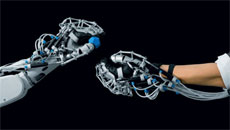Are you among those who surf Facebook or watch TV before hitting the sack after a tiring day? You belong to the majority as bedtime rituals have changed from a good book read to taking resort in the virtual world before sleep.
New research reveals the average bedtime ritual consists of checking social media networks four times and watching 17 minutes of television.
Experts have said that in order to get a good night’s sleep, most people need to unwind for at least half an hour away from technology before trying to get some shut-eye.
This is not the case anymore.
The study by Ergoflex, a Newcastle-based memory foam mattress company, found that most Britons are quite active when it comes to bedtime rituals.
Over 2,500 men and women from all over Britain were quizzed about how they prepare for bed.
The survey revealed that just under three quarters of them check Twitter or Facebook within half an hour of going to bed.
More than half of those surveyed watch a TV programme or film, while a similar number - 63 percent - prepare an outfit for the next day.
Just over half of people read a book and a similar number make their bed before climbing into it to sleep, said the survey.
Experts now suggest to spend time away from technology before sleeping.

